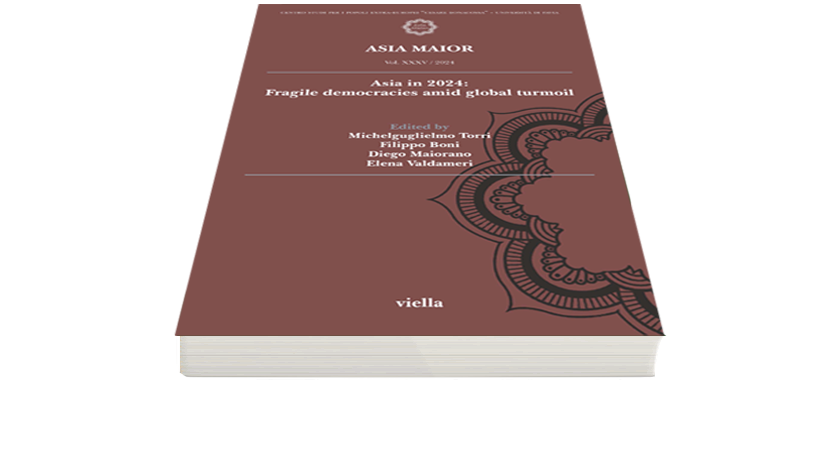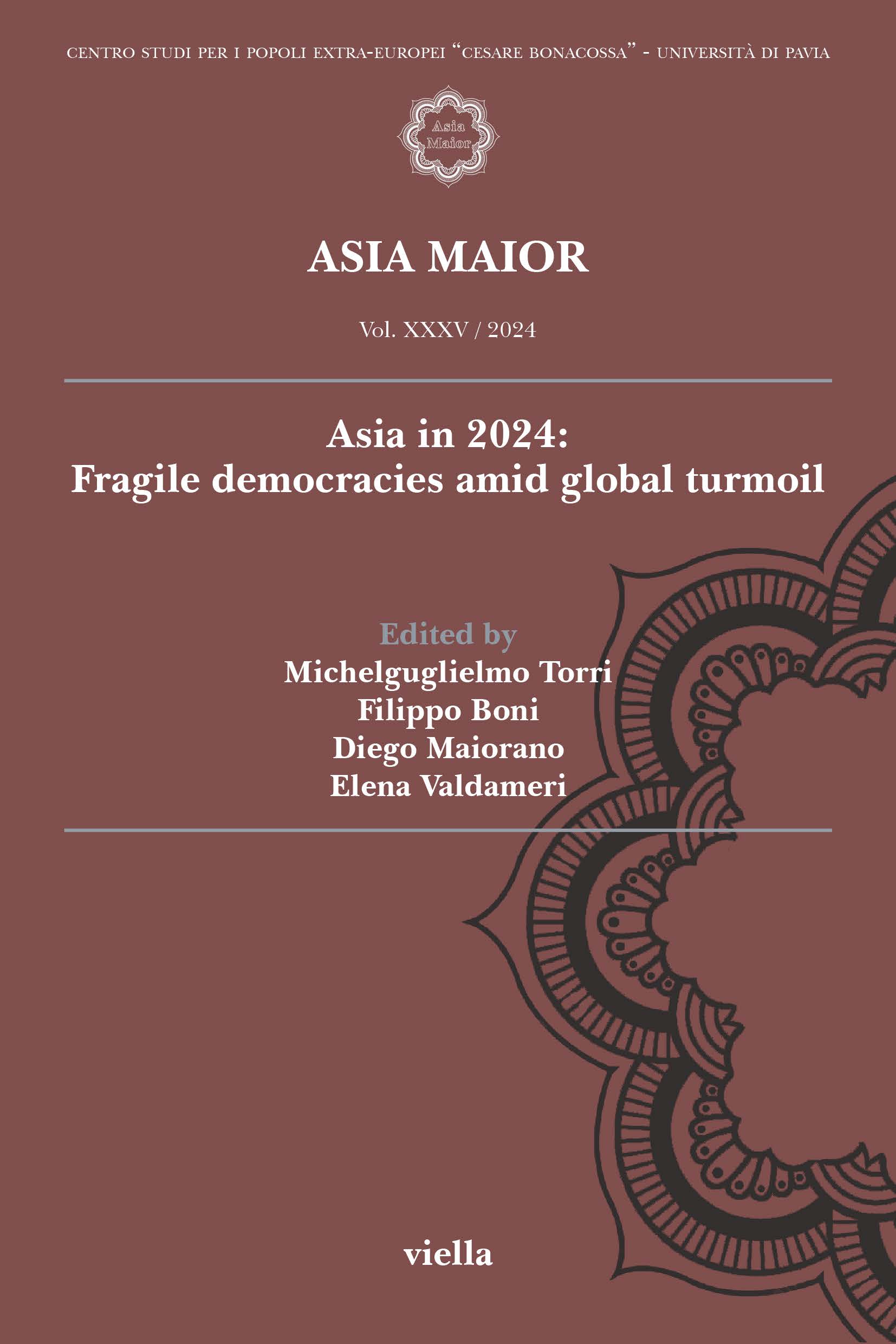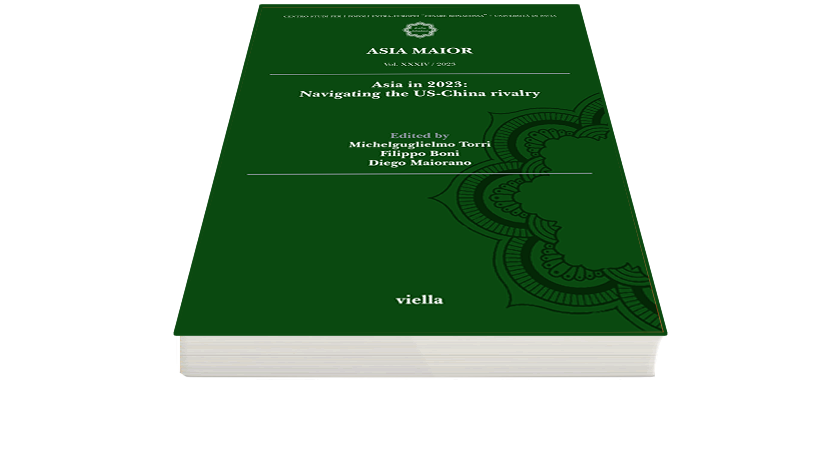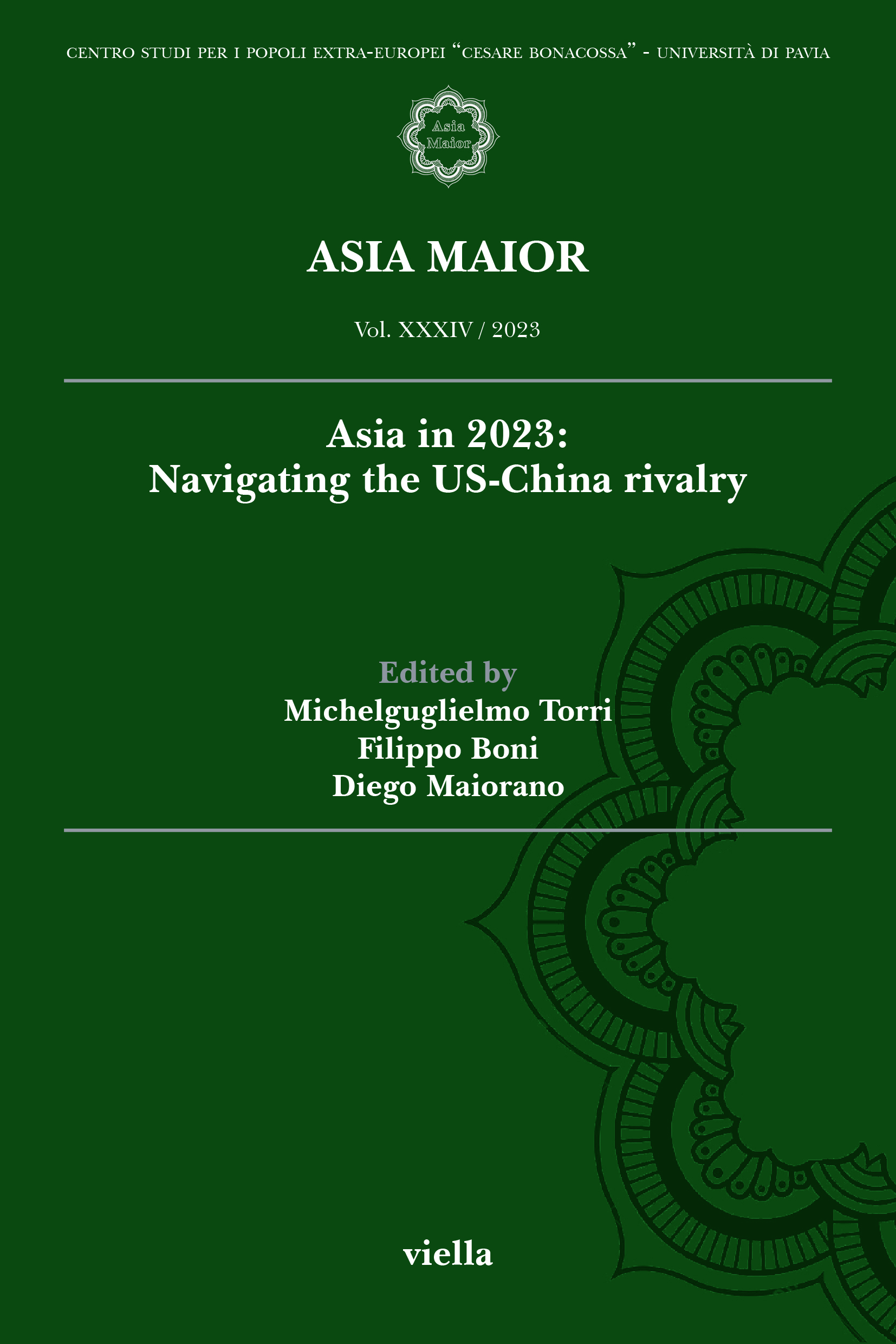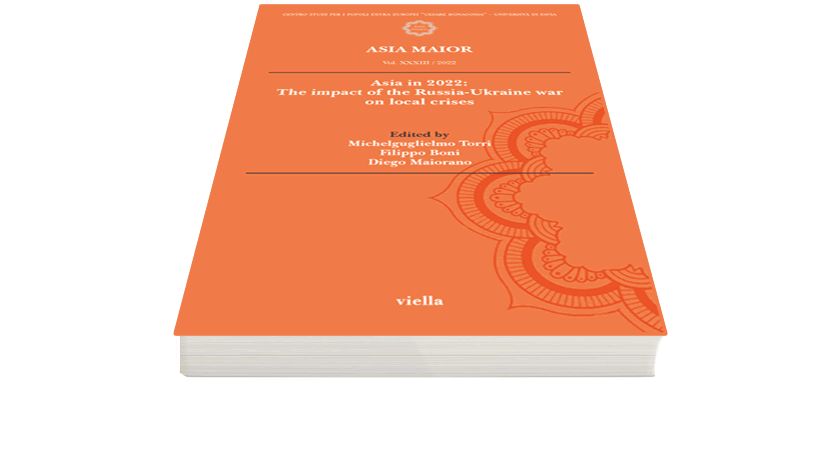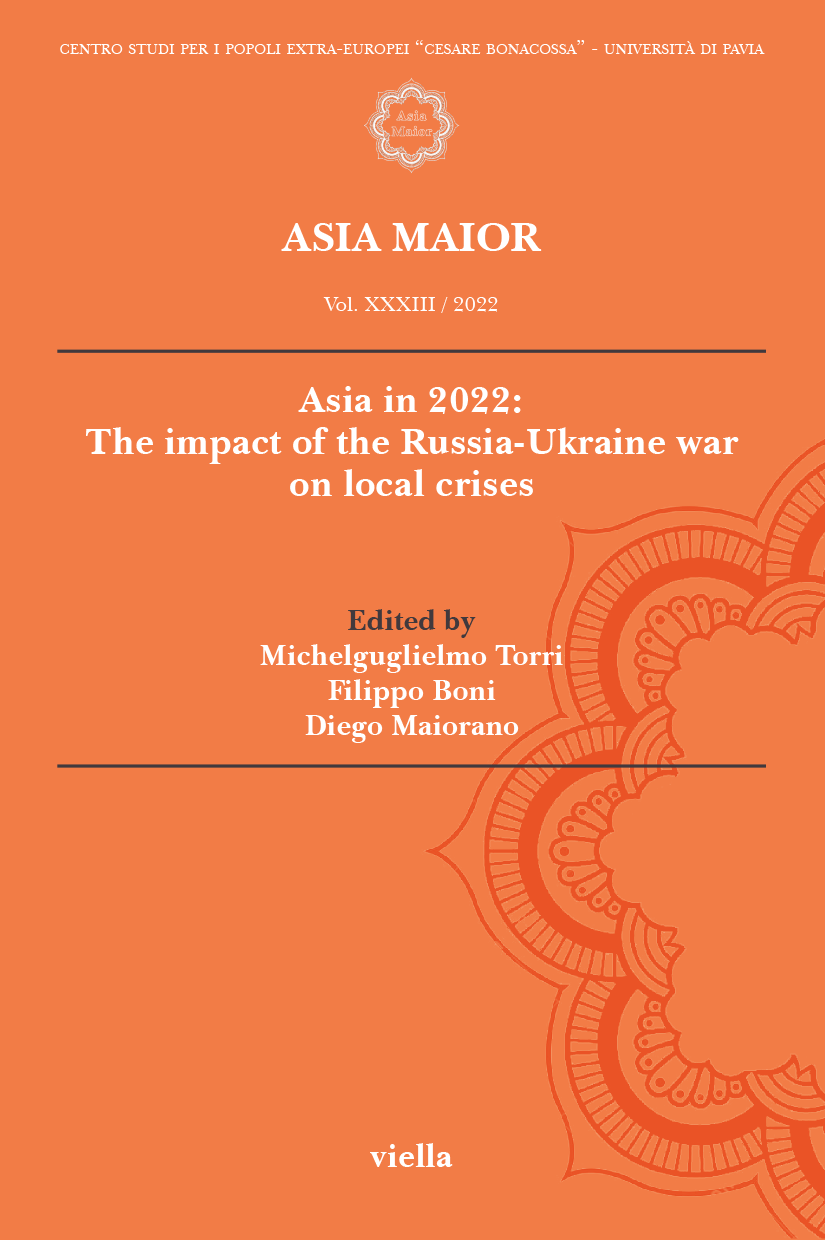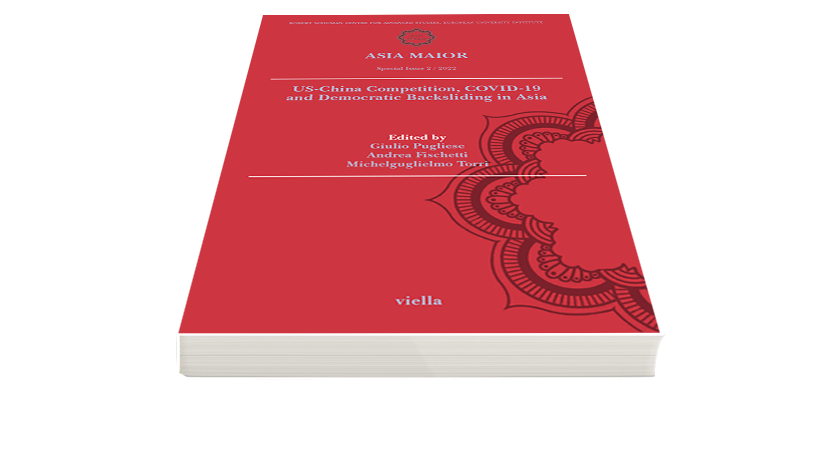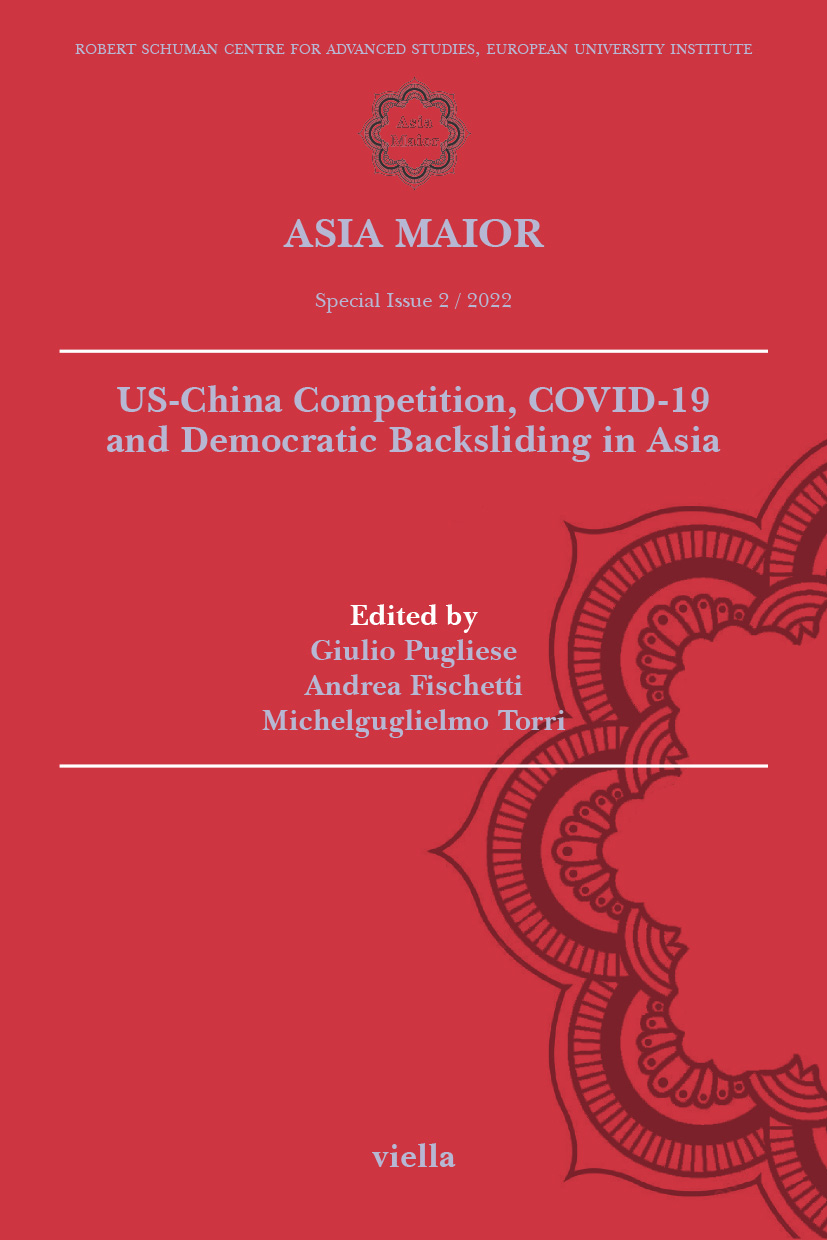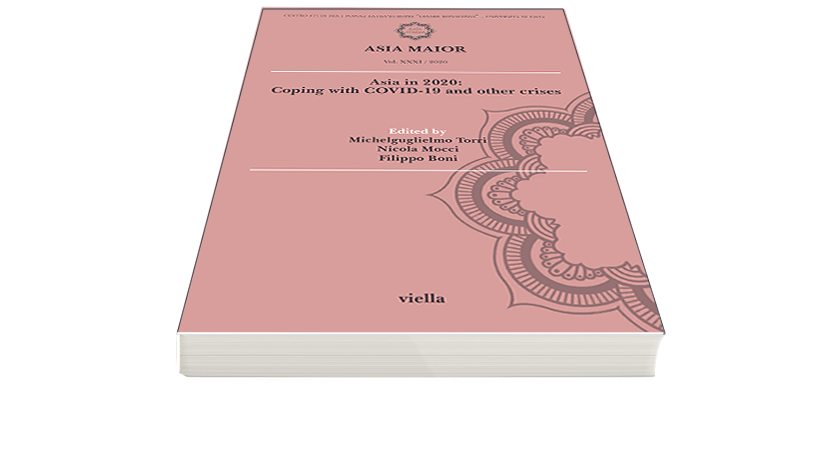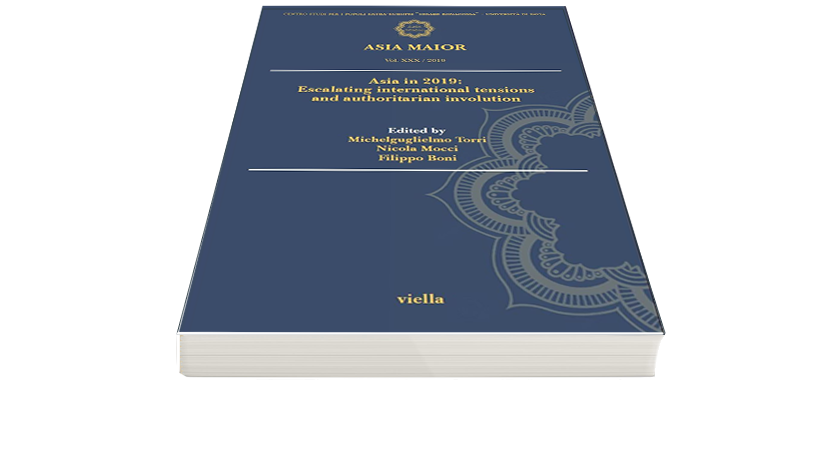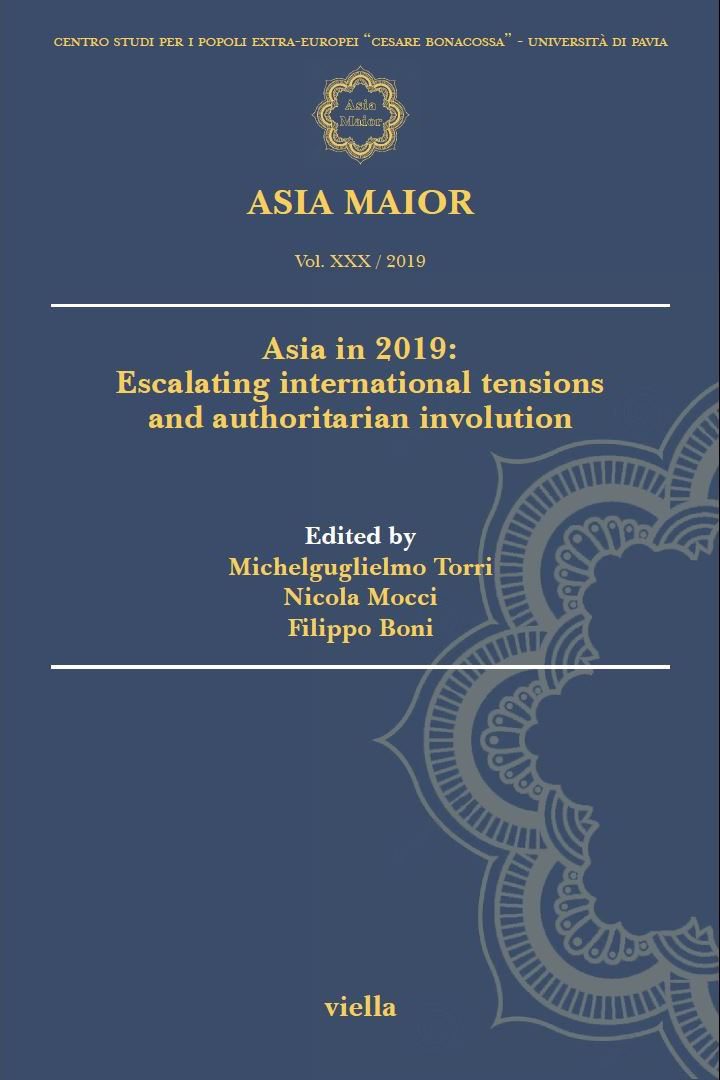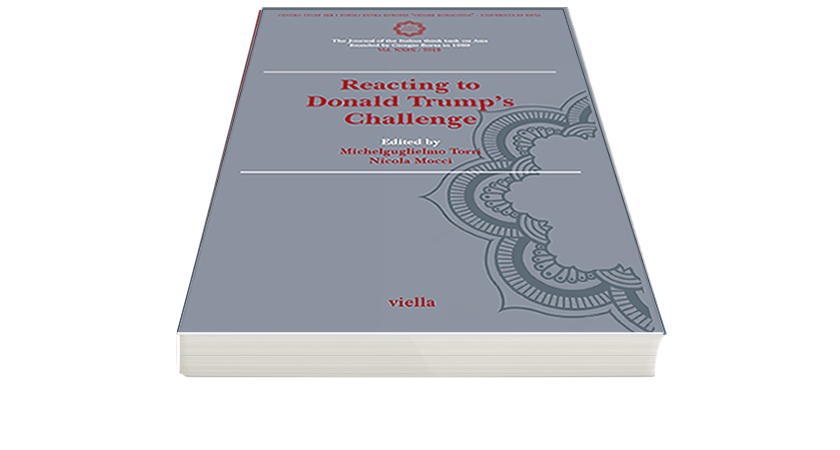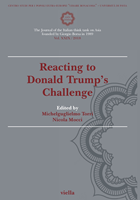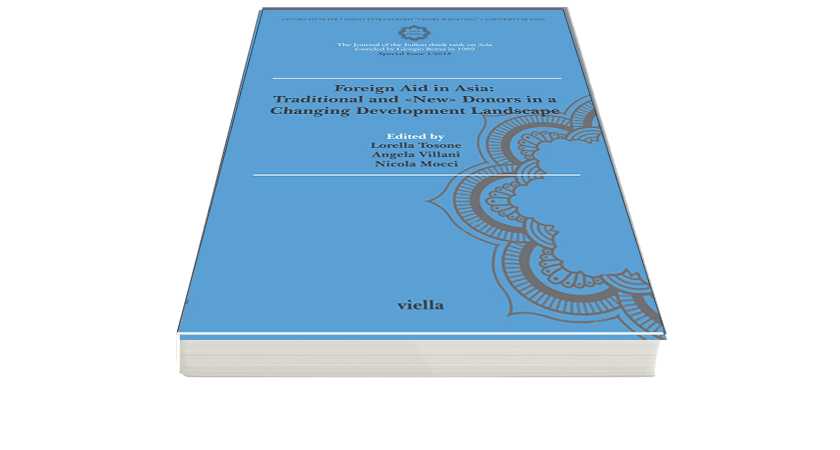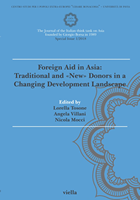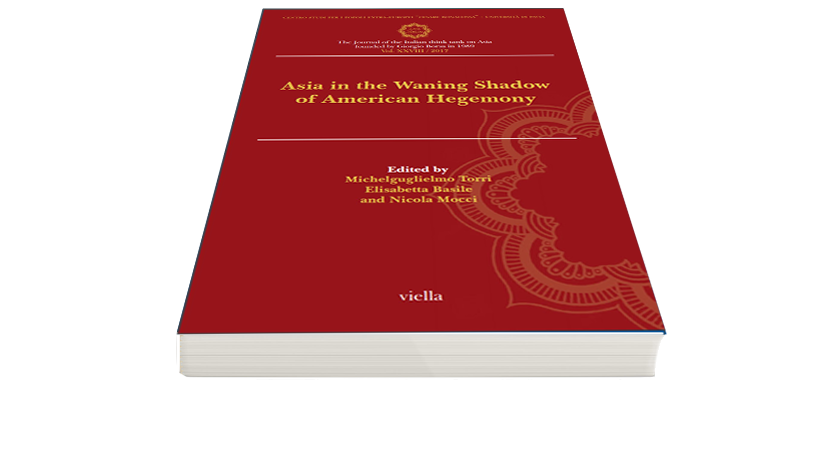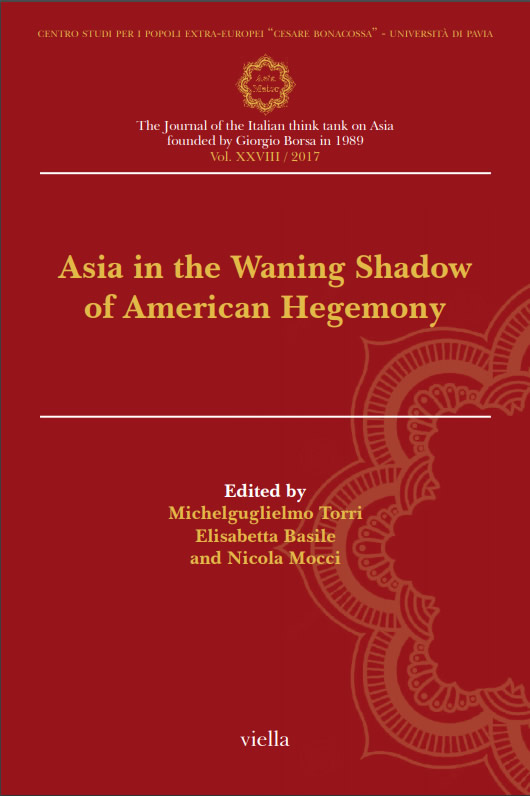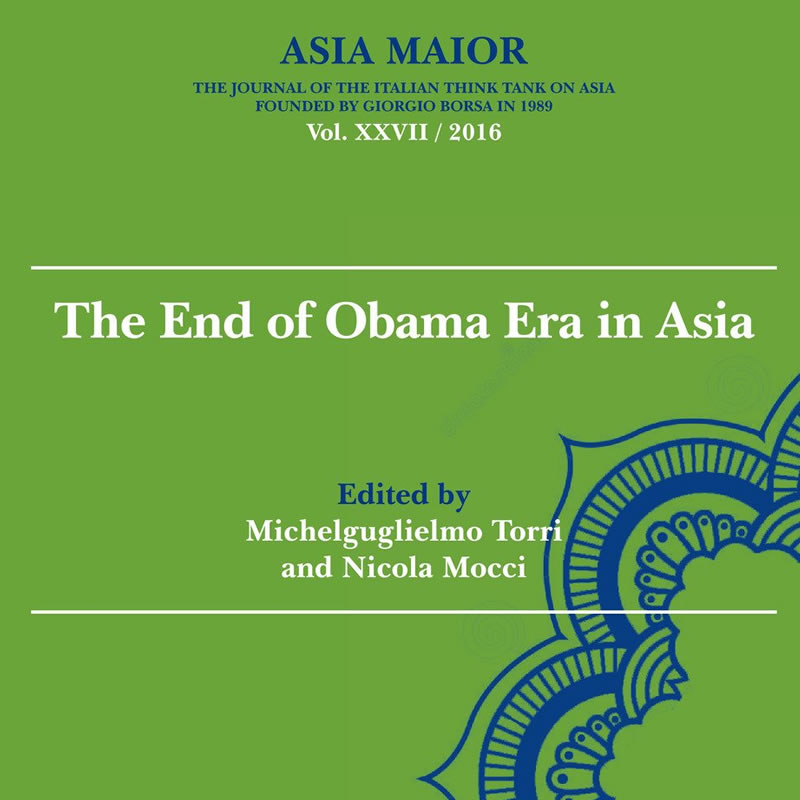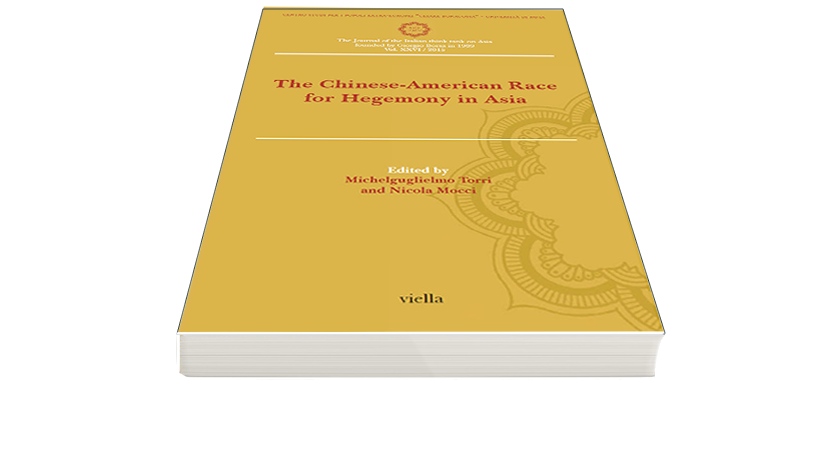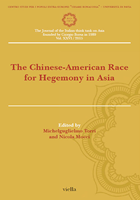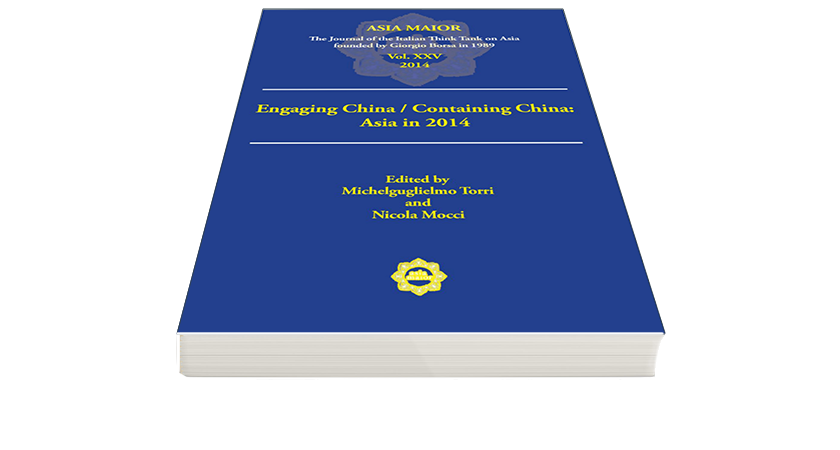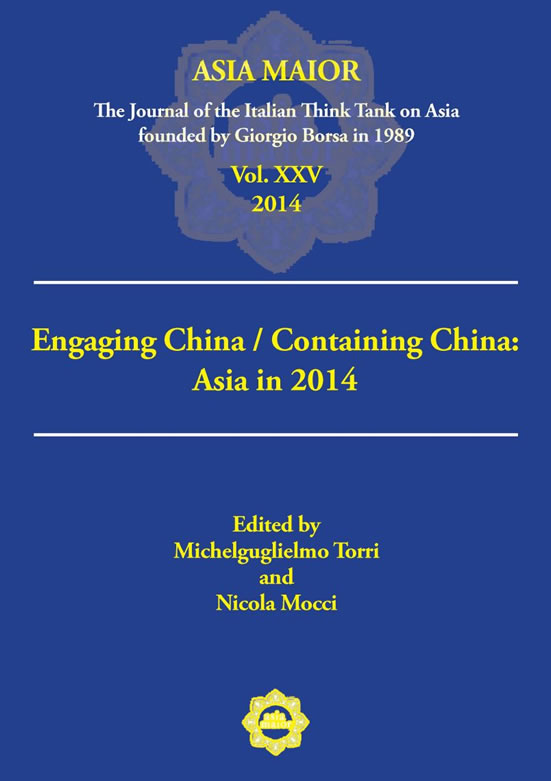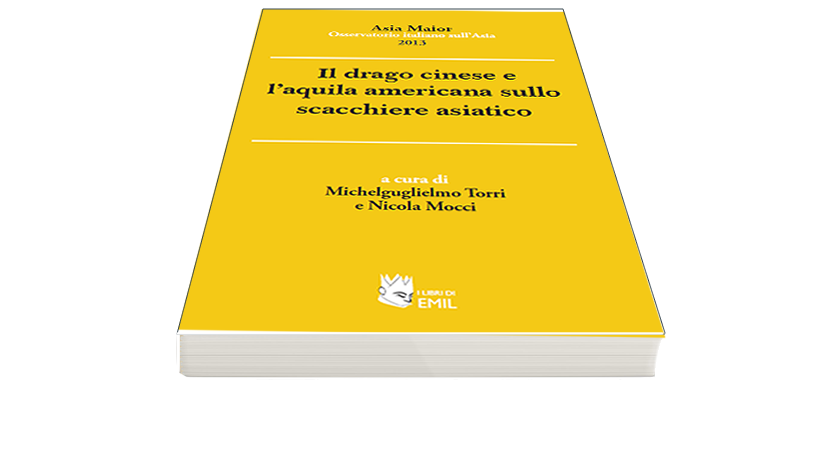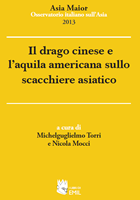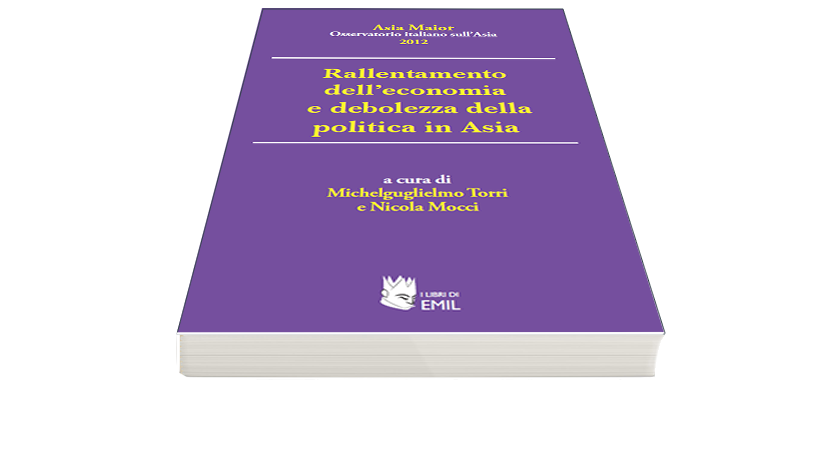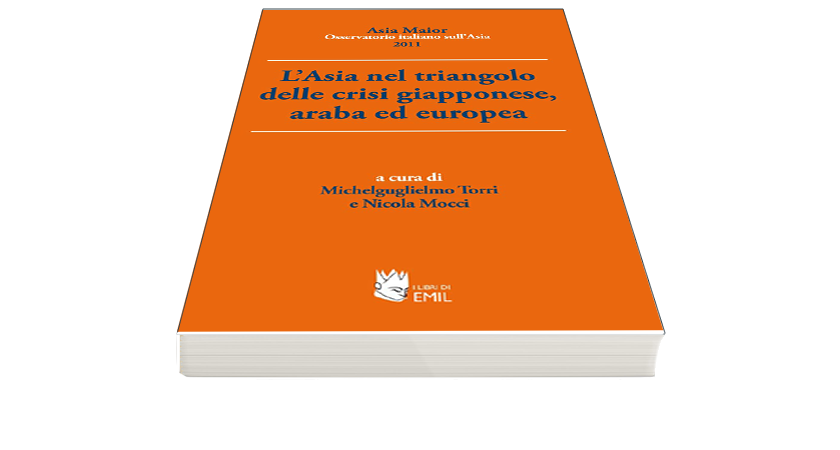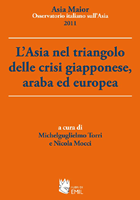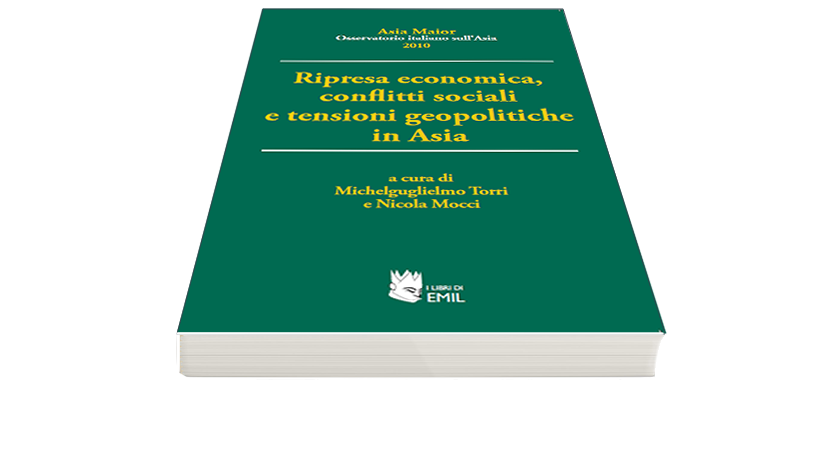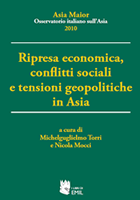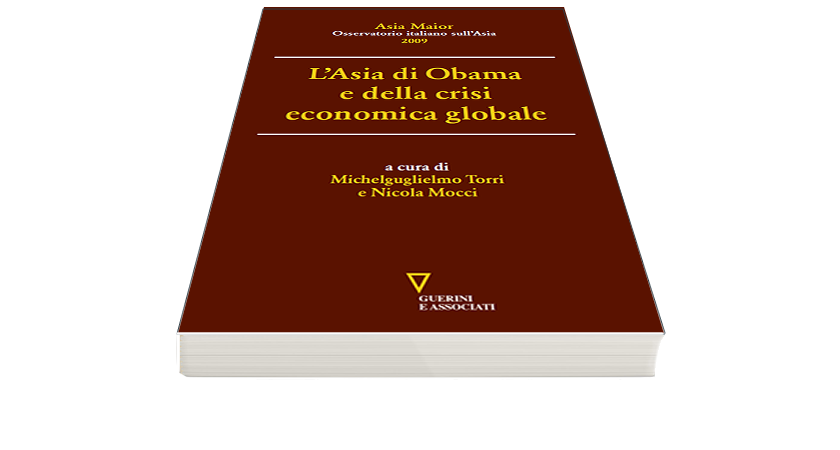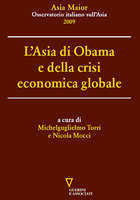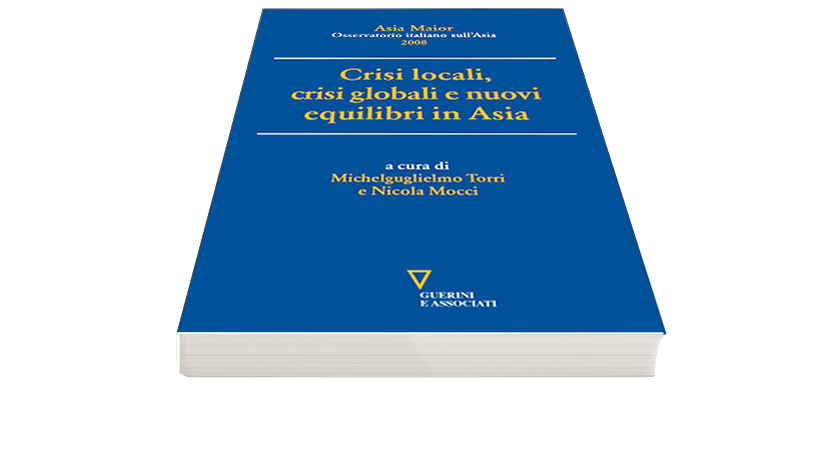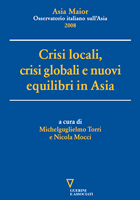Myanmar 2024: Whose tide has turned?
This article highlights the multi-scalar politics of Myanmar, where regional politics and geopolitics interact with and compound national and local issues and conflicts. The first part of 2024 confirmed the trends of the previous year. Ethnic armed organizations (EAOs), in coalition or individually, capitalized on the momentum offered by Operation 1027 with the members of the 3 Brotherhood Alliance gaining ground in Rakhine and Shan States, until a China-brokered ceasefire in January formalized a military withdrawal from key towns and strategic roads. The same groups embarked on ‘Part II’ of Operation 1027 in late June and July, making additional important gains, as evidenced by the capture of the strategic town of Lashio in Shan State and additional territorial gains by the Arakan Army (AA) in Rakhine State. The AA expanded its control of the State further and by the end of the year it had expelled the Myanmar Armed Forces (MAF, the junta’s military) from most of the state. The junta appeared incapable of taking the strategic or even operational initiative and was under attack from all fronts. It lost control of most of its land borders. Perhaps for the first time since independence, it became possible to think of a defeat of the Myanmar military. And yet, over the summer, the anti-military tide in Shan State came to a halt. Feeling that some EAOs had simply gone «too far» and that a collapse of the junta and – by extension – of the state was conceivable, China changed its policy, extending greater support to the junta and withdrawing support from some of its closest EAOs, even arresting its leaders on Chinese territory. Inter-EAO conflicts ensued in Shan State, favouring the military’s position there. Throughout the year, the regime remained embattled, suffering a growing number of defeats, but was not on the verge of imminent collapse.
KEYWORDS – China; Operation 1027 Part II; Arakan Army; Rohingya; Shan State; transnational illicit economies.
1. Introduction
In the years preceding 2024, the situation on the ground in Myanmar consisted of a series of unstable, evolving stalemates, with no side able to prevail over the others. The situation changed rapidly, even unexpectedly, in October 2023 when some ethnic armed organizations (EAOs) made important gains in the north-eastern part of the country (Shan State) and the south-western one (Rakhine State) during what became known as Operation 1027 [Fumagalli 2024].
The first part of 2024 confirmed the trends of the previous year. The EAOs, in coalition or individually, capitalized on the momentum offered by Operation 1027, from the day – 27th October – when the Myanmar National Democratic Army Alliance (MNDAA) and the Ta’ang National Liberation Army (TNLA) launched coordinated attacks against the Myanmar Armed Forces (MAF) and their allies in 2023 [Fumagalli 2024]. In the geographical peripheries of the country the MAF lost control of most of its land borders [Michaels 2024, March; Radio Free Asia 2024, 30 December]. The Myanmar National Democratic Army Alliance (MNDAA) and the Ta’ang National Liberation Army (TNLA), part of the 3 Brotherhood Alliance (3BA) alongside the Arakan Army (AA), embarked on ‘Part II’ of Operation 1027 in late June and July. Fighting came closer to the town of Pyin Oo Lwin in the Mandalay region, site of the important Military Service Academy (a hill station previously de facto the summer capital of British Burma) [Michaels 2024, October]. For a time, in the summer of 2024, it became possible to envisage a road to Mandalay for the armed resistance [International Crisis Group 2024, 15 October]. With additional defeats in Kachin, Chin, and Karen States, the tide appeared to have crucially turned against the military, not only embattled (it had been for some time), but incapable of reacting and losing ground (territory, people, resources) on a daily basis.
Junta leader Min Aung Hlaing came under mounting criticism within the army, although he continued to concentrate decision-making in his hands [International Crisis Group 2024, 15 October]. And yet, at some point, the anti-military tide came to a halt. Part II of Operation 1027 turned out rather differently from Part I. Feeling that some EAOs – most notably the MNDAA and the TNLA – had simply gone «too far» and that a collapse of the junta and – by extension – of the state was conceivable, China changed its policy, extending greater support to the State Administration Council (SAC, as the junta calls itself) and withdrawing support from some of its closer EAOs, even arresting its leaders on Chinese territory. Inter-EAO conflicts ensued, favouring the military’s position. The situation was different elsewhere. The Karen National Union (KNU) made important gains in the east, retaking the town of Manerplaw from the junta-aligned Karen Border Guard Forces.1 Anti-junta forces made strong advances in the western regions of the country too [Michaels 2024, April], where the AA expanded its hold on the northern and southern parts of the state, including the heavily Rohingya-populated towns of Buthidaung and Maungdaw, cutting off the MAF from the Bangladeshi border and also from the rest of the country to the south [International Crisis Group 2024, 27 August; The Irrawaddy 2024, 9 February; The Irrawaddy 2024, 18 March].
With this in mind, given the varying spatial geographies of Myanmar’s conflicts, an overall, nationwide, assessment remains impossible. Observers of local politics have long accepted that Myanmar’s fragmentation may not lead to state implosion but rather the emergence of alternative governance arrangements [Loong 2022; Horsey 2024, 31 May; Pedersen 2024].
As it highlights the multi-scalar politics of Myanmar, where regional and global geopolitics interact with and compound national and often very local(ized) issues and conflicts, this article’s main contention is twofold. One, while a strategic defeat of the military was for the first time in decades, and perhaps ever, at least thinkable, a complete implosion of the MAF was not imminent. Two, the situation of the battlefield remained highly fluid, with certain parts of the country still fiercely contested. That said, the fact that the MAF no longer control most of the country’s land borders was certainly stunning and raised questions about how long the military might be able to endure. China’s gradual but steady intervention in support of the MAF throughout 2024, made of high-level visits from the junta (something it had abstained from doing since the coup) and pressure on its allied EAOs, suggested that at least one form of international intervention was relatively effective in the country. This was not peace-making by any stretch of the imagination, but Beijing appeared to have had enough of the fragmentation of political authority on its doorstep, and the political and economic turmoil that it engendered.
The article is structured as follows. First, I review the year on the battlefield(s), highlighting two key novel dynamics: the EAOs’ successes, particularly in the states of Shan and Rakhine and, in turn, the military’s retreats. A discussion of how different issues shaped and compounded the increasingly dire economic situation follows, while some (predominantly illicit) opportunities also emerged and flourished. Next, I examine the fractured diplomatic landscape, focusing especially on China’s role, before concluding.
2. Domestic situation
The multi-scalar nature of Myanmar politics and the necessity to move beyond Western-centric state-centric frameworks is illustrated by the cross-border politics in the northern areas of Myanmar, particular in northern Shan State, a region bordering China. This territory, as noted in earlier contributions [Loong 2022; Fumagalli 2023, 2024;] has been historically a contested and fraught area, with the army exerting limited control and different EAOs competing with each other over control of territory, people and resources.
Throughout 2024 the State Administration Council lost control of almost all its borders, retreating further towards the centre, with no clear strategy over how to reverse the losses or lift itself out of its self-inflicted predicament.
Instead, junta leader Senior General Min Aung Hlaing concentrated even more positions in his hands, having added the role of Acting President in July 2024 to those he already held (commander in chief, prime minister, head of the State Administration Council) [International Crisis Group 2024, 15 October]. In a sign that discontent was mounting even in the MAF ranks, he reshuffled top positions in the military, prosecuting senior officers for command failures or insubordination. The coup clearly turned out to be a strategic blunder for Min Aung Hlaing, but rather than seeking a way out, he stubbornly – and incompetently – stayed on a ruinous course of action comprising air strikes and retributive violence. He may be presiding over a failing regime, as the International Crisis Group put it [Horsey 2024, 31 May, p. 2], but in 2024 this was still a regime that dies hard.
A possible exit strategy for the regime revolves around the prospect of new parliamentary elections after those of November 2020 were nullified in the immediate aftermath of the coup [Fumagalli 2022]. This scenario has been entertained more by Myanmar’s neighbours eager to see violence on their borders decrease than by the anti-coup resistance likely to view any junta-orchestrated elections as nothing more than a sham. Yet, the military has been very keen to indulge its neighbours regarding this prospect. Ever since the military took over in 2021, the junta has been routinely announcing that elections were imminent, without them actually materializing. In 2024 once again, the SAC announced imminent elections, only to postpone them, and to extend the state of emergency. To this end, or perhaps to maintain the fiction of imminent elections, the military decided to hold a census, which – unsurprisingly – was not complete by the end of the calendar year as the junta’s control of people and territory shrank further during the year [Michaels 2024, November; Radio Free Asia 2024, 20 November].
Resistance groups have been making unprecedented gains in northern Myanmar since the 1027 offensive of October 2023. The 3BA has captured large swathes of territory in the Rakhine, Chin and Shan states. After some hesitation in the first few years after the coup, the 3 Brotherhood Alliance, and most notably the two EAOs operating in Shan State, the MDNAA and the TNLA, entered the fight against the junta in October 2023. While neither Operation 1027 in 2023 nor Part II in June–July 2024 posed an existential threat to the junta in themselves, what they clearly showed was that the MAF were no longer able to hegemonize the battlefield [Michaels 2024, January], clearly impacting on troops’ morale, prompting defections and leading to reshuffles at higher levels. By the end of 2024 the military no longer controlled the North-eastern Military Command (in Shan State) or the Western Military Command (in Rakhine).
Even before the 11 January 2024 ceasefire brokered by China (the Haigeng Agreement), the MNDAA had seized the important town of Laukkaing, home to the military’s regional operations command, from the MAF,2 with the TNLA also capturing roads and towns to its west [Michaels 2024, January]. The ceasefire brought some temporary respite to the junta’s forces, but in the summer, fighting resumed and the two EAOs made additional inroads in previously junta-held territory [Connelly and Michaels 2024]. Part II of Operation 1027 led to additional losses for the military, such as that of the strategic town of Lashio, the de facto capital of Northern Shan and seat of the Northeastern Regional Command, in early August. Additionally, the MNDAA seized a number of important border crossings and captured the ethnic Chinese-majority Kokang Special Administrative Zone, from which it had been expelled by the military in 2009. This was the first time the MAF had lost a regional command [Michaels 2024, July]. This gave the 3BA control of major arteries of trade with China and brought the MNDAA and the TNLA closer to launching large-scale attacks into the dry zone. The city of Mandalay appeared potentially vulnerable to operations by the 3BA. This is when China threw its leverage into the conflict, pressuring the two EAOs as other China-aligned EAOs in Shan State (the United Wa State Army (UWSA) and the Shan State Progressive Party/Shan State Army, SSPP/SSA)3 intervened to stop the 3BA’s advances. The TNLA called for a ceasefire in November. In a surprising turn of events, the Chinese authorities detained the MNDAA’s leader Peng Daxun during a visit to the city of Kunming on 18 November, forcing the organization to re-enter political dialogue with the junta [Frontier Myanmar 2024, 4 December], so that the MNDAA followed TNLA’s lead in calling for its own ceasefire and talks with the junta in December.
The situation in Rakhine State appeared less uncertain in terms of the outcome compared to that in Shan State, with the MAF gradually retreating further to the southern part of the state. The AA’s grip and control of territory consolidated and expanded throughout the year. By the end of the year, the state appeared all but lost to the military, with the AA coming very close to being the first EAO to capture a whole state in Myanmar (and more, given that it controls the Paletwa township in Chin State). To recall, the Arakan Army (AA) was established in Kachin State in 2009, before moving to Rakhine, with conflict taking place on and off between 2018 and 2022. Ceasefires alternated with new outbreaks of violence in 2022 and 2023, when the AA launched an offensive in coordination with the other two partners in the 3BA. Throughout 2024, the AA made rapid advances in the state, particularly. In the first part of the year, it concentrated on the northern part of the state, the symbolically important town of Mrauk U in February, once the capital of the Arakan Kingdom before being conquered by the Burmese Kingdom in 1785, and capturing the Rohingya-majority town of Buthidaung in the township of Maungdaw in May [The Irrawaddy 2024, 9 February].
The endgame remained unclear for the AA throughout 2024. It maintained its claims that it seeks a confederacy with Myanmar, though the reality on the ground more closely resembles that of de facto statehood, building up its own parallel institutions dealing with health, education, public administration and justice. The fact remains that by the end of the year the AA controlled 13 townships out of 17 in the territory, with one falling rapidly after the other in November and December, when the AA captured Toungup (which prevents overland supply to the important centre of Kuakphyu from the Myanmar mainland), Ann (home to the headquarters of the Western Military Command and a major pumping station of the oil and gas pipeline to China) [Radio Free Asia 2024, 9 December] and Gwa [Radio Free Asia 2024, 30 December; Strangio 2024, 31 December]. The AA finalized its control of the border – crucial to the cross-border flow of goods – by seizing Border Guard Post no. 5 with junta and junta-aligned militias fleeing to Bangladesh across the Naf river [Abuza 2024, 7 December]. The MAF remained confined to the state capital Sittwe, Manaung islands (the AA’s naval capabilities remained inferior to that of the junta) and, crucially, Kyaukphyu. This centre is vital to both the junta and China. In the Kyaukphyu Economic Zone, China has key energy facilities, such as the gas and oil pipeline, which travel across the rest of Myanmar to Yunnan Province in China. Unlike Shan State, there was no indication that China was pressuring the AA to enter negotiations with the SAC.
And yet, upon closer inspection, not all was well for the Arakan Army, as concerns of inter-communal violence resurfaced once again after a lull of a few years. Its capture of Buthidaung [The Irrawaddy 2024, 18 May] was accompanied by reports of abuses (against the local Rohingya population, though the AA disputed the claim) and extensive incidents of arson across the town where many areas were burnt down [Bhattacharyya 2024, 8 October; Frontier Myanmar 2024, 12 November; Naw 2024, 12 June; Rahman 2024]. The military weaponized the inter-communal tensions. The military’s objective was clearly to drag the Rohingya into the conflict between the AA and the MAF [Bhattacharyya 2024, 23 December], which it is clearly succeeding in doing. In an astonishing twist of events even by the standards of Myanmar’s complex and, at times, convoluted conflicts, the SAC effectively entered deals with a number of Rohingya militant organizations (the Arakan Rohingya Salvation Army, or ARSA; the Rohingya Solidarity Organization, RSO; and the Arakan Rohingya Army, ARA) [International Institute of Strategic Studies 2024, 11 December]. Young male Rohingya were reportedly conscripted, with widespread reports of coercion, to fight against the AA [International Crisis Group 2024, 10 May]. The absence of a unified leadership among the Rohingya made any negotiation between the community and the AA (or its political wing, the United League of Arakan) challenging [International Crisis Group 2024, 27 August].
Elsewhere in the country the situation looked similarly challenging for the junta. In Karen State, the town of Manerplaw retaken by the Karen National Union after losing it to the military-aligned Border Guard Force in 1995 [Strangio 2024, 18 December]. The victory was more symbolic than strategic, as Manerplaw was conceived by the Karens as the capital of an independent Kawthoolei (Karen homeland). The far more important border city of Myawaddy was also seized in the earlier part of the year, but the military retook it in April [Michaels 2024, July]. In Chin State, different anti-military organizations are in control of different parts of the territory, with the AA controlling Paletwa township in the south. In the north, the Kachin Independence Army (KIA) seized five major border crossings, taking full control of the border with China in the areas of their operations [Frontier Myanmar 2024, 10 December; Radio Free Asia 2024, 21 November; Radio Free Asia 2024, 13 December].
3. Economy
Already one of the poorest countries in South East Asia prior to the 2021 coup, Myanmar was plunged into a series of crises that compounded each other, with serious impacts on the lives and livelihoods of millions [Mathieson 2024, 6 June; Strangio, 2024, 12 December]. In its end-of-year update, the World Bank reported a multifaceted crisis in which ongoing conflict, natural disasters, rapid currency depreciation, high inflation and outward migration have combined to produce an ‘atrophying effect’ on the formal economy [World Bank 2024].
While a single indicator cannot capture the tragic nature of Myanmar’s economic crisis, the freefall of the national currency, the kyat (MMK), was a good indicator of its predicament. In mid-August 2024 the exchange rate to the US dollar was 7,000 MMK, an enormous loss in value compared to 2019 when the exchange rate was around 1,500 MMK to the US dollar [Abuza 2024, 7 December; Mizzima 2024, 6 December]. The Kyat’s value recovered partially in the later part of the year following the Central Bank of Myanmar’s decision to sell foreign exchange on the market on its own online trading platforms. As noted in last year’s contribution [Fumagalli 2023], different exchange rates exist in the country, with the junta trying to coerce the population to rely on the official and artificially inflated exchange rate for both everyday domestic and international transactions (e.g. remittances from Myanmar nationals working abroad). More generally, the junta’s plan – just like in previous years – was to secure as much foreign currency as possible to buy weaponry and ammunitions as military spending consumed about 60% of the national budget in 2024. International migration remained an important coping mechanism for the population, as detailed in a recent report by the World Bank [2024]. As skilled workers in sectors such as ICT or engineering appeared especially mobile, this boded ill for the local economy.
There was very little meaningful legal activity of note. To illustrate the point, Myanmar produced only 300 MW of electricity (against a demand amounting to 540 MW, a 25% decline since the coup), with many power-generating facilities inoperable or in sites beyond the SAC’s control. Foreign investment has fallen each year since 2021, from US$ 1.64 bn in FY2022-23 to US$ 661 m in 2023-24. In the first seven months of FY24-25 totalled only US$ 226m [Abuza 2024, 7 December; Mathieson 2024, 6 June].
To mitigate such a stark predicament, the junta kept looking for new revenues, including through discussions with China about possible additional sales of oil and gas or an increase in the sale of gems. The latter move was thwarted by the 3BA’s territorial gains, as the TNLA tried to deprive the junta of the control of the ruby trade mined in Mogoke. The TNLA blocked all large-scale mechanized mining, traditionally dominated by the military-owned Myanma Economic Holdings Limited. The SAC sought to recall Myanmar nationals working abroad, exerting pressure on the Thai government (the majority of Myanmar migrants were based there), so that the 2 million legal residents and the more than 3 million undocumented migrants would make their way back to the country. In September 2024, the SAC enacted a rule to force expatriate workers to transfer 25% of their remittances through formal bank channels, where they must use the official exchange rate of 2100 MMK to the US dollar [Mizzima 2024, 6 December].
Not all economic activities suffered in the aftermath of the coup, though. Protracted conflicts intensified the criminality of Myanmar’s economy. The country topped the list of 193 countries of the Global Organized Crime Index. In 2023 it was blacklisted by the Financial Action Task Force (FATF) [Fumagalli 2024]. A ‘sector’ that has been thriving in recent years has been that of online scam centres [Clapp and Tower 2024; Fong and McGowan 2024; International Crisis Group 2024, 27 March; Tower and Clapp 2024, 26 September; MacPherson and Wilson 2024; Tiwari 2025] and one of the key reasons behind China’s tacit greenlighting of Operation 1027 in the later months of 2023, including the junta’s lack of responsiveness to shut them down in Kokang Special Administrative Zone on China’s borders [Fumagalli 2024]. As Fong and McGowan note [2024], several South East Asian countries have become global hubs for cyber scams, an «industry» that generated more than US$ 75 billion between 2020 and 2024. Myanmar has emerged as the epicentre of this industry, initially around Kokang (which prompted China’s pressure on the junta via the EAOs in 2023). Such activities tend to be concentrated along the border with China and, increasingly, Thailand. Tower and Clapp, in their extensive investigation of this phenomenon, highlighted how a pro-military warlord, Saw Chit Thu, operating from Karen State, set up countless (over a thousand) such sites along the Thai-Myanmar border, the most infamous being the Shwe Kokko Park and KK Park in Myawaddy township in Karen State [Clapp and Tower 2024]. Cross-border smuggling has long been a lifeline for many in the country. This is especially the case in Rakhine State. One of the tactics adopted by the MAF against the resistance organizations is the blocking of supply routes, depriving the population living in areas controlled by either EAOs or the People’s Defense Forces (the latter usually aligned to the National Unity Government, the successor of the government deposed in the 2021 coup) of essential commodities, including foodstuff [Bhattacharyya 2024, 8 October]. In Rakhine State, where the AA controls more than half of the 17 townships, the junta closed supply routes from the mainland and the southern part of Rakhine, which it still controls. The disruption of already precarious supply routes from the rest of Myanmar (owing to the poor state of roads), have made the smuggling of commodities from across the border in Bangladesh and India a necessity to keep the people of the AA-controlled Rakhine State afloat [Bhattacharyya 2024, 23 December]. Smuggled goods include oil, cooking oil, soaps, washing detergents, flour, garments – typically from India and Bangladesh. Rakhine state is strongly dependent on India and Bangladesh for fuel (diesel and petrol) and medicines (especially from India). In this context waterways have been vital to the local economy, and particularly the banks of the Kaladan river in the town of Paletwa.4
The second area in which Myanmar can «boast» some dubious and questionable success is that of opium production. In 2023, Myanmar overtook Afghanistan to become the world’s top opium producer after the Taliban banned the cultivation of opium poppies, resulting in a 95% decline in opium production in that country [Strangio 2024, 13 December]. The area of opium poppy under cultivation in Myanmar decreased by 4% between 22/23 and 23/24, according to the United Nations Office on Drugs and Crime (UNODC) [Strangio 2024, 13 December].
According to the World Bank, about 14 million people, or a quarter of the population, were experiencing acute food insecurity in late 2024, up from around 10 million the previous year [World Bank 2024]. For millions of ordinary people lacking access to aid and basic services, food insecurity and continuing brutalization by the MAF and facing a collapsing economy render the situation every day more tragic. The situation remained dire throughout the year.
The fact that, for the first time, a collapse of Myanmar’s military and the regime became conceivable led to a frenzy of diplomatic initiatives stemming from an urgent need to rethink prior «approaches» to the conflict. However, the diplomatic landscape remained fractured, or disparate [Connelly and Michaels 2024]. A lack of international coordination on Myanmar, stemming from each political actor’s suspicion that geopolitical competitors may gain from changes on the ground, have led to, at best, a fragmented form of peace-making [Adhikari 2023], where different actors, primarily regional and non-western, set up their own initiatives.
The UN left the position of Special Envoy for Myanmar vacant for about nine months, in a clear display of where the country ranks in its priorities. As in preceding years, Western «distraction» by other wars, in Ukraine and the Middle East, masked its current haplessness. Beyond an additional round of sanctions [Reuters 2024, 29 October], there was little of note to suggest that western countries and organizations may be willing to dedicate more attention and provide more resources to the people of Myanmar. ASEAN downgraded Myanmar’s representation at key meetings in response to its failure to implement the group’s «Five-Point Consensus» but has struggled to find ways to de-escalate the conflict and foster dialogue. Laos took over ASEAN’s chairmanship in 2024, which, according to ASEAN’s current practices which see the rotating chair also hold the chairmanship of the organization’s (non-) policy on Myanmar. Just like its predecessors in this post, the Lao People’s Democratic Republic did not deliver any substantial changes.
Thailand tried to revamp its Myanmar policy [Strangio 2024, 17 December]. For the first time, all of Myanmar’s neighbours met with representatives of the SAC in Thailand on 19 and 20 December [Strangio 2024, 20 December]. Myanmar’s decades-long conflicts, including in Karen State on the Thai border, has also led to a significant flow of refugees, particularly since the 1980s, with the town of Mae Sot in Tak Province being on the receiving end of thousands of Myanmar refugees since then. Thailand, just like China, has not officially endorsed the actions of the EAOs, but has none the less accepted their practical existence. If anything, Bangkok accepted their presence as tantamount to a de facto buffer between war in Myanmar and its own territory. This policy has not really worked very well, as random shelling on Thai territory, including but not limited to the border town of Mae Sot are a regular occurrence. In April 2024 Thailand’s Defence Minister had signalled its displeasure with such a regular spillover of violence, announcing that the Thai military would shoot down any Myanmar military aircraft operating in its air space [Michaels 2024, April]. And yet in March fighting took place in close proximity to the 2nd Friendship bridge connecting Myawaddy with Tak Province [Bangkok Post 2024, 11 April]. On the first of this two-day round of meetings, representatives of the SAC were also in attendance. While little of substance emerged from the gathering, this nonetheless signalled some effort by certain ASEAN members to rethink their engagement approaches.
In 2024 China changed its approach to the crisis in Myanmar, from a fairly minimalistic approach (preventing the potential spillover of instability into its borders) to a more interventionist one. In late 2023, on the occasion of Operation 1027, China’s tacit endorsement of the offensive, by and large motivated by Beijing’s frustration with the junta’s reluctance to crack down on the online scam centres in the Kokang Special Administrative Zone in north-eastern Shan [Fumagalli 2024], stunned external observers. This was – rightly or wrongly – due to the common perception, inside and outside Myanmar, that China’s impulse would be to support the authoritarian regime against domestic challengers, which can be regarded as either a stance in favour of regime survival or (its own) border security.5 Scam centres in the north-east (particularly the Kokang Special Administrative Zone) have caused enormous damage to Chinese citizens and more generally to China-Myanmar bilateral ties. The China-Myanmar Economic Corridor runs through Shan and Rakhine – active conflict zones – thus directly impacting on investment and trade with China. Furthermore, the wave of refugees appears unstoppable, especially on the Thai and Indian borders. Cross-border smuggling of all substances, from commodities to basic goods and (in a reverse direction) various types of illicit substances including yaba and crystal meth (amphetamines), shows that despite state attempts to seal off their borders this is just not possible.
From mid-2024 onwards China undertook more active efforts to shape the trajectory of the conflict. As both MNDAA and TNLA accumulated gains in northern state of Shan over the summer, China used its leverage on other EAOs to its advantage. Beijing asked the United Wa State Army (probably Myanmar’s largest EAO by troop numbers) to pressure MNDAA to withdraw forces. The People’s Liberation Army (PLA) conducted live-fire drills on the China–Myanmar border [Michaels 2024, July]. China’s new stance also manifested itself in the form of senior level meetings in both China and Myanmar and pressure on a number of EAOs over which it has historically held considerable influence, which took place throughout the remainder of the year. Former Myanmar President Thein Sein paid a visit to Beijing on 29 June. On 19 June, Wang Yi met with junta Foreign Minister Than Swe in Nay Pyi Taw, the first visit since May 2023. The junta interpreted this as an important display of support for the regime at a crucial time, despite the fact that Wang did not offer anything concrete, other than stating that «China’s friendship extends to all of the Myanmar people». In early July, junta’s number 2 Senior General Soe Win made a visit to Qingdao in Shandong province. Last, but not least, in a surprising twist of events in light of Myanmar’s context (where Sinophobia is rampant across both society and the military), there was China’s proposal to the junta to form a joint venture security company (JVSC) [The Irrawaddy 2024, 15 November]. After seeing the fall of Lashio to the MNDAA, the escalation of armed conflict in Rakhine, an attack on the Chinese consulate in Mandalay, and the capture of a Chinese-owned nickel processing plant in Tigyaing (Sagaing region) and the China-backed Alpha Cement factory in Patheingyi township (Mandalay region), Beijing felt compelled to come up with a better plan to contain the fallout of the war in Myanmar on its local economic interests [Radio Free Asia 2024, 22 November]. On this basis, the junta formed a working committee on 22 October 2024 to prepare a Memorandum of Understanding to establish a security company. The committee’s responsibilities include scrutinizing the importing and regulating of weapons and special equipment, ensuring proper control and usage [The Irrawaddy 2024, 21 November]. The security company would handle the import of weapons and special equipment. The news followed Chinese Foreign Minister Wang Yi’s meeting with junta leader Min Aung Hlaing on 14 August, where they discussed the acceleration of the Belt and Road Initiative. They also debated the smooth operations of oil and gas pipelines connecting Yunnan Province with Rakhine State. Wang emphasized the importance of protecting Chinese projects and personnel in Myanmar. In a meeting held in November, Senior General Min Aung Hlaing told PRC Premier Li Qing that he would speed up other BRI projects, pledging the construction of the BRI-related Muse-Mandalay-Kyaukphyu train line. This train line would link Muse in Myanmar, on the Chinese border, with Kyaukphyu in Rakhine State in the Andaman Sea. The project was stalled by Operation 1027 and other 3BA advances.
On Myanmar’s western borders, both India and Bangladesh struggled to come to terms with the gradual but steady loss of control of the country’s borders by the MAF. The areas affected were the regions bordering Chin and Rakhine States [Michaels 2024, May]. Since 2019 the Bangladeshi authorities have been fairly lenient towards the Arakan Army, even turning a blind eye to its activities within its territory [see for example, Fumagalli 2023 and 2024]. The Bangladeshi authorities have similarly neglected the activities of Rohingya militant organizations within and outside the large camps, as these sought to recruit volunteers (or coerce young men) among their ranks as they resumed operations in Rakhine State. The political turmoil within Bangladesh itself in 2024, where long-standing autocratic leader Sheikh Hasina was ousted in August following weeks of protests in the summer [The Daily Star 2024, 5 August], led to some repositioning of the country as the new authorities, led by Nobel prize laureate, entrepreneur and philanthropist Mohammad Yunus, focused more on domestic political and economic priorities than cross-border issues with neighbouring Myanmar. India also struggled to come to terms with the post-coup dynamics in Myanmar. Unlike Dhaka, New Delhi never quite tolerated the Arakan Army, which, by operating in the southernmost part of Chin State (Paletwa township) has repercussions for India’s north-east. What directly affects India as a result of the AA’s operations is that war in western Myanmar interferes with the Kaladan Multi-Modal Transport Project, which, among others, allows the connection between Kolkata and India’s own north-eastern states of Manipur and Mizoram [Frontier Myanmar 2024, 3 December].The Indian state of Manipur, in particular, has been engulfed, since late 2023, in a civil-war like situation, where cross-border instability is one of the factors fuelling the conflict and providing armed insurgents with a safe haven [Maiorano and Khattri 2024].
Throughout 2024 the situation on the ground in Myanmar remained extremely fluid. Galvanized by the success of Operation 1027, the three EAOs constituting the 3 Brotherhood Alliance pushed further, building momentum and, crucially, gaining additional territory in two key states, Rakhine and Shan, with additional territory captured by other EAOs, for example in the Kachin and Karen states. Inroads into the central areas remained challenging for the less well-equipped and generally National Unity Government-aligned People’s Defence Forces.
The tide seemed to have crucially turned against the military. The disintegration of the military regime appeared at least conceivable, though not an imminent prospect. China’s tacit endorsement of the MNDAA and TNLA-led Operation 1027 confirmed the enormous leverage the country has on those organizations and its ability, if not to determine, certainly to shape outcomes on the ground, locally (in Shan State) and nationally, by conveying messages to the junta. However, the anti-junta tide at some point stopped as the MNDAA and the TNLA seemed to push too far for China’s liking. Beijing’s change of approach – from a bystander eager to protect its interests (trade, investment, border security) without tying this to the junta’s fate, to a more interventionist one – reversed the tide. If China established some clear boundaries for some of the EAOs operating in Shan State, it still appeared uncertain as to how to handle the AA, despite its considerable economic interests in Rakhine State. Although interactions between local, national and international issues and actors were evident throughout Myanmar, the extent to which those interaction took place and, crucially, their impact on conflict dynamics and outcomes, continued to vary significantly across the various geographies of war. The events of 2024 showed that there was no exit strategy in sight for the regime, but nor was a decisive turnaround of the dynamics on the battlefield.
Bibliography
Abuza, Zachary, 2024, 7 December, ‘Chinese aid cannot overcome Myanmar junta’s declining finances and morale’, Radio Free Asia.
Adhikari, Monalisa, 2023, ‘Non-western engagement in peace processes and the rise of «hedging» by elites in conflict-affected states’, Cambridge Review of International Affairs, 37(3), pp.338-360.
Bangkok Post, 2024, 11 April, ‘Myanmar troops retreat to Thai bridge’.
Bhatthacharyya, Rajeev, 2024, 8 October, ‘Investigation: what happened at Buthidaung town in Myanmar’s Rakhine state’, The Diplomat.
Bhattacharyya, Rajeev, 2024, 23 December, ‘Smuggled commodities from India and Bangladesh are lifelines for Myanmar’s Arakan’, The Diplomat.
Clapp, Priscilla and Jason Tower, 2024, ‘Transnational Crime in Southeast Asia. A Growing Threat to Global Peace and Security’,United States Institute of Peace, May.
Connelly, Aaron, and Morgan Michaels, 2024, ‘Disparate diplomacy: Managing the post-coup Myanmar conflict’, Asia-Pacific Regional Security Assessment 2024, IISS.
Fong, Clara, and Abigail McGowan, 2024, 31 May, ‘How Myanmar Became a Global Center for Cyber Scams’, Council on Foreign Relations.
Frontier Myanmar, 2024, 3 December, ‘India must do more for Myanmar refugees in Mizoram’.
Frontier Myanmar, 2024, 4 December, ‘MNDAA second anti-junta armed group to call for peace talks’.
Frontier Myanmar, 2024, 10 December, ‘Treading carefully: KIO navigates rocky ethnic terrain in new territory’.
Frontier Myanmar, 2024, 12 November, ‘Fog of war: the battle for truth and blame in the Rakhine conflict’.
Frontier Myanmar, 2024, 20 December, ‘MDNAA meets with junta’.
Fumagalli, Matteo, 2022, ‘Myanmar 2021: repression and resistance in a multi-cornered conflict’, Asia Maior, XXXII/2021, pp. 256-276.
Fumagalli, M., 2023, ‘Myanmar 2022: fragmented sovereignties and the escalation of violence in multiple warscapes’. Asia Maior, XXXIII/2022, pp. 261-280.
Fumagalli, Matteo, 2024, ‘Myanmar 2023: new conflicts and coalitions reshape war narrative, challenging an embattled junta’, Asia Maior, XXXIV/2023, pp.235-257.
Horsey, Richard, 2024, 31 May, ‘Myanmar is fragmenting – but not falling apart’, Foreign Affairs.
International Institute of Strategic Studies, 2024, 11 December, ‘Competing armed groups pose new threat to Rohingya in Bangladesh’.
International Crisis Group, 2024, 27 March, ‘Scam Centres and Ceasefires. China–Myanmar Ties Since the Coup’, Bangkok/Brussels: Asia Briefing 179.
International Crisis Group, 2024, 10 May, ‘War in western Myanmar: avoiding a Rakhine-Rohingya conflict’.
International Crisis Group, 2024, 27 August, ‘Breaking Away: The Battle for Myanmar’s Rakhine State, Asia Report 3’, Asia Report, 39.
International Crisis Group, 2024, 15 October, ‘Myanmar: the death throes of Min Aung Hlaing’s regime’.
Loong, Shona, 2022, June, ‘Post-coup Myanmar in six warscapes’, International Institute of Strategic Studies.
Maiorano, Diego & Raghaw Khattri, 2024, ‘India 2023: Towards the general elections amid rising social tension’, Asia Maior, XXXIV/2023, pp. 259-300.
Mathieson, David Scott, 2024, 6 June, ‘Junta waging war on Myanmar’s doom-loop economy’, Asia Times.
McPherson, Poppy, and Tom Wilson, 2024, ‘Crypto scam: inside the billion-dollar «pig-butchering» industry’, Reuters.
Michaels, Morgan, 2024, January, ‘Problems extend beyond battlefield for Myanmar’s battered regime’, IISS Myanmar Conflict Update.
Michaels, Morgan, 2024, March, ‘Myanmar’s regime shrinks further towards the centre, IISS Myanmar Conflict Update.
Michaels, Morgan, 2024, April, ‘Melee in Myawaddy: resistance battles junta in key border town’, IISS Myanmar Conflict Update.
Michaels, Morgan, 2024, May, ‘Threat of communal violence grows in western and central Myanmar’, IISS Myanmar Conflict Update.
Michaels, Morgan, 2024, July, ‘China pressures Myanmar opposition groups to halt the latest offensive, IISS Myanmar Conflict Update.
Michaels, Morgan, 2024, October, ‘Is the brotherhood headed to Mandalay?’, IISS Myanmar Conflict Update.
Michaels, Morgan, 2024, November, ‘Regime election plans and prospects for dialogue in Myanmar’, IISS Myanmar Conflict Update.
Mizzima, 2024, 6 December, ‘Foreign currency exchange rates fall as Myanmar kyat grows stronger’.
Naw, Theresa, 2024, 12 June, ‘The burning of Buthidaung: allegations, denials and silence in Myanmar’s Rakhine state’, The Diplomat.
Pedersen, Morten B., 2024, May, ‘Outrage Is Not a Policy. Coming to Terms with Myanmar’s Fragmented State’, Lowy Institute.
Radio Free Asia, 2024, 20 November, ‘Junta chief vows to complete Myanmar census by year end – then hold elections’.
Radio Free Asia, 2024, 21 November, ‘Myanmar’s Kachin insurgents take control of their border with China’.
Radio Free Asia, 2024, 22 November, ‘Myanmar rebels capture town on main road to Chinese-built port’.
Radio Free Asia, 2024, 9 December, ‘Myanmar rebels capture last military post on Bangladesh border’.
Radio Free Asia, 2024, 13 December, ‘Myanmar border with China in northern rebel zone to reopen, group says’.
Radio Free Asia, 2024, 30 December, ‘Myanmar’s Arakan Army takes a major town, says ready for talks’.
Rahmam, Shafiur, 2024, 17 December, ‘Drones, desperation, and displacement: Rohingya flee violence in Myanmar’s Rakhine state’, The Diplomat.
Reuters, 2024, 29 October, ‘UK, EU and Canada impose new sanctions targeting Myanmar military’.
Strangio, Sebastian, 2024, 12 December, ‘Myanmar economy to shrink further in 2025, World Bank says’, The Diplomat.
Strangio, Sebastian, 2024, 13 December, ‘Myanmar remains world’s leading source of illegal opium cultivation’, The Diplomat.
Strangio, Sebastian, 2024, 17 December, ‘Thailand confirms details of «informal» Myanmar meetings’, The Diplomat.
Strangio, Sebastian, 2024, 18 December, ‘Myanmar rebel group claims recapture of former headquarters on Thai border’, The Diplomat.
Strangio, Sebastian, 2024, 20 December, ‘Thailand hosts «informal consultation» on Myanmar Conflict’, The Diplomat.
Strangio, Sebastian, 2024, 31 December, ‘Ethnic rebels announce seizure of key town in Western Myanmar’, The Diplomat.
The Daily Star, 2024, 5 August, ‘Hasina resigns’.
The Irrawaddy, 2024, 9 February, ‘AA: History Mrauk U seized from Myanmar’s junta’.
The Irrawaddy, 2024, 18 March, ‘Myanmar junta loses another town to Arakan Army in Rakhine State’.
The Irrawaddy, 2024, 18 May, ‘AA claims seizure of Buthidaung neaer Bangladesh border’.
The Irrawaddy, 2024, 15 November, ‘Myanmar junta planning joint security firm with China’.
The Irrawaddy, 2024, 21 November, ‘With proposed security gambit, Beijing decides «enough is enough» in Myanmar’.
Tiwari, Ayush, 2025, 11 February, ‘The scammers who got scammed: how jobless Indians were lured into cyber slavery’, Scroll.in.
Tower, Jason, and Priscilla A. Clapp, 2024, 26 September, ‘Myanmar Scam Hubs Revive Fast after China Eases Pressure on Junta’, United States Institute of Peace.
World Bank, 2024, Myanmar Economic Monitor, December Update.
1. The KNU had conceived of Manerplaw as the capital of a «historical Karen homeland» (referred to as Kawthoolei).
2. On 5 January, so a few days before the ceasefire, the 3BA had already accepted the unconditional surrender of MAF troops.
3. The MNDAA, UWSA and NDAA EAOs all trace their lineage back to the China-backed Communist Party of Burma, founded after its collapse in 1989.
4. Paletwa township is formally in Chin State, but that part of territory is claimed and controlled by the AA.
5. Both the central government and the provincial one in Yunnan have long maintained ties with certain EAOs, most notably the MNDAA and UWSA.
* The author gratefully acknowledges the support of the Arts and Humanities Research Council (AH/S00405X/1) and the Scottish Council on Global Affairs for the support to the research related to this article.
Asia Maior, XXXV / 2024
© Viella s.r.l. & Associazione Asia Maior
ISSN 2385-2526

